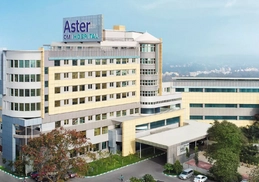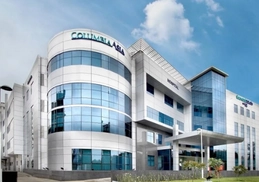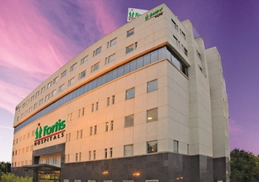
+91 8095511877

+91 8095511877
Facelift surgery helps you to reduce the effects of aging on your face.
As you grow older, it is natural for you to develop creases, wrinkles, jowls, etc. in different parts of the face. Your skin will look loose and saggy. You can do very little by yourself to prevent or reduce these effects of aging.
A facelift helps to tighten your facial skin and redistribute the fat deposits in a more even manner. It can also tighten the muscle in your face to a certain extent. After the surgery, you will have a more youthful appearance.
There are different types of facelift surgeries done. A full facelift, midface lift, lower facelift, mini facelift, etc. are some of them. A facelift may be done alone or along with other cosmetic surgeries like a neck lift, brow lift, etc.
Facelift surgery will take about 3 to 5 hours to complete. You will be in hospital for about 2 to 3 days. Recovery from facelift surgery will take about 3 to 4 weeks.
A facelift is done only to reduce the effects of aging as and when they occur. It cannot prevent age-related changes from happening again. A facelift also cannot correct small wrinkles, the effects of sun, and smoking in your face and minor creases. It cannot correct any discoloration in the skin of your face as well.
Anyone having a facelift should have realistic expectations regarding the outcome.
Aging is something that you cannot help, and so are age-related changes. As you grow old, your face will develop wrinkles, creases, and jowls. These changes occur due to a combination of various factors.
An unbalanced distribution of fat, a loss of facial muscle tone and elasticity of the skin, and the gravitational pull are some of the major contributing factors. If you smoke or expose yourself to too much sun, these changes occur much faster.
Uneven distribution of fat can make certain areas of the face have an uneven appearance. A loss of muscle tone and thinning of the skin makes your face droopy and flabby. Prominent and sagging jowls can create the presence of a ‘double chin’ on your face. Loose skin with no fat under it may hang below your jaws.
These changes will make you ‘look’ old even if you don’t ‘feel’ old in your mind. A facelift will help you to have a more youthful look.
A facelift will tighten the facial soft tissues to an extent, removing the prominent wrinkles that develop around your eyes. It will also balance the distribution of facial fat, to make your jowls look less prominent. It will also trim away the excess skin in your face to reduce the creases.
By having a facelift, you will have a more ‘youthful’ look, which can do wonders to your self- confidence. You will feel happy emotionally, as the anxiety, you feel about your self-image decreases. Most of the people who have a facelift report a significant improvement in their self-esteem, mood, and social life.
You should understand that facelift surgery can correct the age-related changes only within a given limit. If you are expecting your face to look exactly like how it was in your younger days, you are bound to be disappointed. Because as said, a facelift is not a ‘gateway’ to youth, but an effort to prevent you from looking ‘old.’
A facelift is a cosmetic surgery procedure to make you look ‘younger’ in appearance. It alters your appearance with the help of surgery.
A facelift does not have any physical health benefits as such. But it might make you healthier emotionally and mentally.
Since it does not have any physical health benefits and only cosmetic benefits, the surgery is elective by nature. The decision to have surgery is entirely your choice. So, you must have a thorough understanding of all aspects of the operation.
You should have a good idea about the change in the way you will look after surgery. You should have the surgery only if you are convinced about the results. You should also have a proper understanding of the various risks and complications associated with the surgery.
Facelift surgery is a major surgery with a lengthy recovery period. Hence, you should be in good physical and mental health at the time of surgery.
Certain conditions can prevent you from having surgery. They are
Ideally, you should have very realistic expectations regarding the outcome of the surgery. High and unrealistic expectations can be a cause of disappointment.
The most common types of facelift are
1. Traditional Full Facelift
A full facelift can correct problems in all areas of your face. It can correct the wrinkles around your eyes, creases, and jowls around your mouth and sagging cheeks. It will also remove excess fat and remove the excess skin that hangs below your jawline. Most people will have liposuction of the lower face along with a facelift.
The incision for the surgery will be a large but well-concealed one. It will start at your temple and will run along your hairline in a downward stroke. It will pass in front of your earlobes and along the border of your lower jaw into the neck. The same will be done on the other side as well.
A full facelift surgery offers the best results as it improves the contours of the face in full.
2. Mid-Facelift
Mid-facelift aims to correct the problems in the middle third of your face. It targets the regions around the eyes and cheeks. If you only want to enhance the contours of your face around your cheekbone, a mid-facelift is a good option.
3.Lower Facelift
A lower facelift targets the lower one-third of your face. It can help remove the creases and jowls around your mouth. It also corrects the sagginess in the corners of your mouth.
4.Mini Facelift
A mini- facelift targets the jaws, lower part of the cheeks, and the upper neck. The incisions will be smaller in size, and hence your recovery will be faster. A mini facelift is a good option to correct initial signs of aging.
5.Thread Facelift
A thread facelift is a minimally invasive surgery for minor corrections. In a thread facelift, only the skin of your face is lifted and tightened. It helps reduce the sagginess of the skin in the lower cheeks, jaws, and the upper neck. Often, it has a temporary and minimal effect.
Facelift surgery is a major surgery done purely for cosmetic reasons. The recovery time will about three to four weeks. After the surgery, there will be a change in the way you look.
You need to prepare yourself emotionally, mentally, and of course, physically.
If you smoke, you need to stop a few weeks before surgery. Otherwise, your healing process and recovery will be longer.
You need to stop any blood thinners or herbal supplements a few days before surgery. It is to avoid excessive bleeding during and after surgery.
Any surgery has some risks and complications, and a facelift is no exception. You should be ready to accept this fact and be prepared to deal with them if they occur at all.
You should commit yourself to follow any instructions give by the surgeon before, during, and after the surgery.
Before the surgery, your doctor will subject you to a thorough physical examination to assess your health status.
You will need to be in the hospital the night before surgery.
You will be under anesthesia during the surgery and so will not feel any pain.
The incision for a facelift will depend on the type of facelift surgery you are having. For a full facelift, the incision will begin in the temple and extend downward to the earlobes, jaws, and the upper part of the neck.
For a mid- facelift, lower facelift, mini facelift, etc., the incisions will be smaller, as they target only a small portion of your face.
Through the incision, the surgeon will slowly lift your facial skin from the underlying tissue. The next step is to tighten your facial muscles. Fat will be removed from the areas where it is in excess and added in those areas where it is less. It helps to create a uniform contour for your face.
The skin will then be lifted and tightened over your new facial contour. Excess skin will then be trimmed off and sutures made along the new borders. A compression bandage will then be placed over your face to stop bleeding and swelling of your face.
Once you are in your room and the effect of the anesthetic wears off, you will feel some pain. You will find that your face is swollen and tightly bandaged. You will feel nausea and also find it a bit difficult to speak as well.
You will have to keep your head elevated while you sleep or lie down.
You can apply icepacks around your face at regular intervals, which will provide relief from and swelling.
You will be encouraged to walk around the room to promote better blood circulation.
For the first few days, you cannot have solid food as you will not be able to chew properly. During this time, you can have liquid or properly mashed food.
The pain that you will feel may last for a couple of days. But, the swelling in your face will take about 2 to 3 weeks to go off. There is no need to panic, as it is natural to have it.
You should not bend down or lift anything heavy.
Your sutures will be removed after a week or so.
You can have a body bath after a couple of days, but the head bath will have to wait longer. For at least 3 to 4 weeks, you should not expose yourself to the sun. After that also you will have to use sunscreen lotions while going out.
You should be aware of the signs of the complications of the surgery. If you feel any signs and symptoms, you should report to the surgeon.
Although a safe surgery, a facelift also has its risks and complications. The most common risks associated with a facelift are
Apart from these, certain risks are specific to facelift surgery. They are
Damage to the nerves in the face- Nerve damage can cause various symptoms like numbness, tingling sensations, etc. in the areas supplied by the nerve.
The asymmetry between the two sides of the face- A facelift may create an unevenness between the two sides of the face. If this occurs further corrective surgery will be needed
Visible scars- Usually, the scars of a facelift are not obvious as it is in areas where they are not visible. But in certain persons, they become apparent. Scars may be wide or thickened depending on the way the wound has healed
Hematoma- Hematoma is a collection of blood under the skin. The skin may look swollen and bruised. A hematoma usually resolves by itself within a few days.
Numbness of the face- This happens due to the damage to the nerves supplying the area. It is usually temporary and goes off within a few weeks.


This article has been reviewed for medical correctness and relevance by
Dr Quazi Ahmad
Dr Qazi Ahmad completed his medical graduation with a gold medal from the prestigious AMU, one of the oldest university in India.He has a busy practice in KDA(Kokilaben Dhirubhai Ambani Hospital, Mumbai) and caters to all types of complex and challenging plastic surgery cases. He is frequently invited for lectures and surgical demonstrations in plastic surgery conferences and workshops.

Apollo Chennai

Apollo Indraprastha

Aster CMI

BLK Hospital

Columbia Asia

Fortis Bangalore
Frequently Asked Questions
Is facelift a safe surgery?
How does a facelift improve my looks?
Are the effects of a facelift permanent?
How long do the effects of a facelift last?
What is the cost of facelift surgery in India?